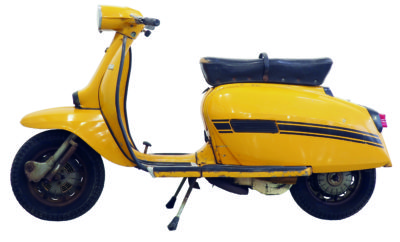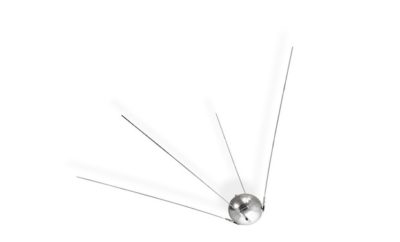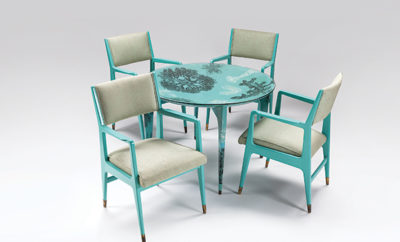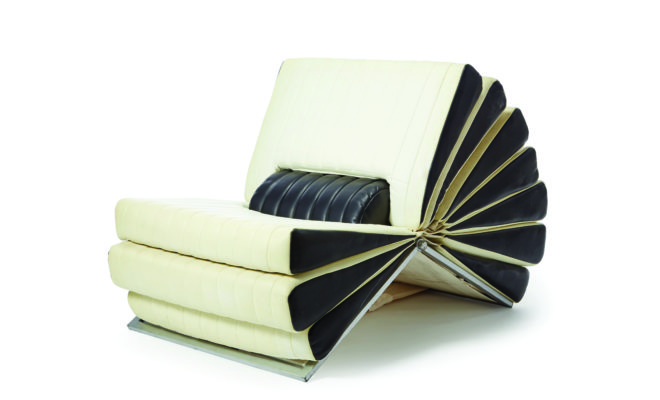 COURTESY OF IL PONTE
COURTESY OF IL PONTE
Design
Delving Deeper
Lot 121 Il Ponte Decorative Arts of the 20th Century and Design sale, June 19, 2018: Gruppo DAM Libro armchair, produced by Busnelli. With an estimate of € 1,900– € 2,200, the piece sold for € 16,000. Some reasons for the high price:
GROUP PROJECT
Gruppo DAM (Designer Associati Milano) was formalized in 1967 in Milan and demonstrated an impressive output of pieces in seating, lighting, and tableware before dissolving just eight years later, in 1975. Documentation around Gruppo DAM is scarce, but the designs attributed to it are iconic, and credit for them is often shared with Gruppo G14 and that group’s talented roster of designers who congregated in the late 1960s, including Gianfranco Facchetti, Umberto Orsoni, Gianni Pareschi, Giuseppe Pensotti, and Roberto Ubaldi. Pareschi described G14’s creation as “born on the banks of the Politecnico,” referring to the Polytechnic University of Milan where he trained in design and which instilled in the group an ethos of integrated workmanship and innovative content. Both groups were operating and creating concurrently with Gruppo Industriale Busnelli’s shift to more industrialized and research-based methods of production to accommodate the growing housing demands of the Italian population, with a new factory opening in Misinto, outside Milan, in 1972. The Libro chair is still distributed by Busnelli, which touts the piece in its Icons collection, along with a number of other designs by Pareschi with G14.
CURLING UP ON A GOOD BOOK
The Libro—meaning “book” in Italian—takes its form quite literally. But while possibly visually confusing on first glance, the chair is quite simple in design. Ten thin wedges are stacked on each other, hinged at the apex of an articulated steel frame. What unfolds is an object with a childlike sense of discovery, offering an extraordinary range of seating positions depending on the flipping of each “page” along the spine. It demonstrates the re-envisioning of industrial design into a subversive lifestyle tool. And for a chair that cleanly falls into Italy’s postwar “anti-design” movement of the late 1960s and early ’70s, it’s surprisingly functional—as practical as it is playfully outlandish. As Stefano Poli, specialist in decorative arts of the twentieth century and design at Il Ponte, explains: “Undoubtedly, its originality, its simplicity, its ease of use, and its versatility make this sculpture-like armchair attractive to lovers of beauty and collectors interested in the conception and cultural process of design.” In the Libro, the team additionally implemented new materials— polyurethane foam, vinyl, steel—executed in ways that were practical to the chair’s use, giving it flexibility and comfort. The Libro is thus emblematic of its time, as Poli contextualizes: “The use of foam rubber, faux-leather, and aluminum are inserted in the innovative industrialization of materials typical of the period. . . . Between the end of the Second World War and the ’60s [these materials] were perfected and adopted in the first industrial serial productions of Italian design.”
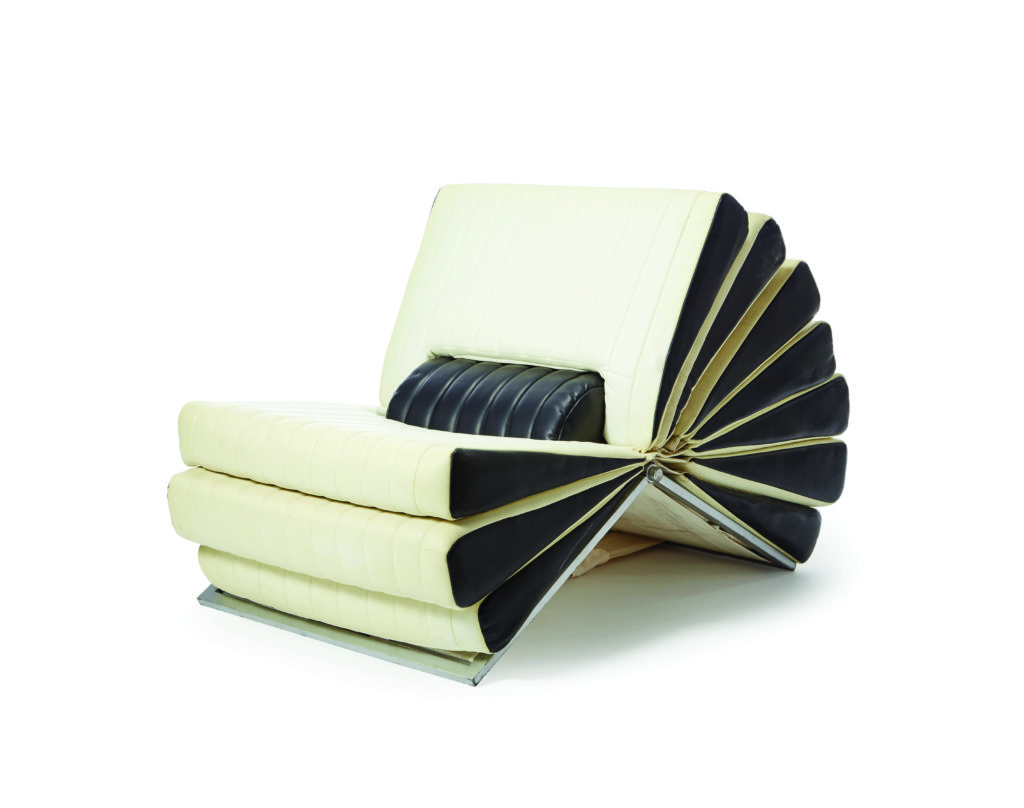
COURTESY OF IL PONTE
FLIPPING FOR A FORTUNE
Models of the Libro armchair have come up for auction sporadically in the last decade, with most operating at an estimate similar to Il Ponte’s and selling close to estimate. Of its popularity, Poli speculates: “A peculiar characteristic of this armchair lies in the fact that it unites a high executive level and an attention to the design ‘mechanism,’ which is typical of the great Italian inventive tradition and projects it towards provocations and artistic freedom, irony, and strength evocative of radical design.” This Libro came from a prominent Milanese private collection of mostly Italian design that had held it since it was originally purchased. Perhaps due to this dutiful stewardship and care, part of this example’s appeal was its superior quality: among other attributes, Poli notes that it boasts its original foam interior padding. Poli priced the sale overall with prudence, aligning values with current market rates, scholarly forecasting, and hope for potential. He reports that, for the chair, “the sale price increased greatly compared to the initial estimate thanks to the various writ- ten and telephone bids, but, above all, due to three Italian and foreign buyers who were present in the room, on the telephone, and online.” The Libro chair was sold to a regular patron of Il Ponte whose impressive collection resides in Europe.


